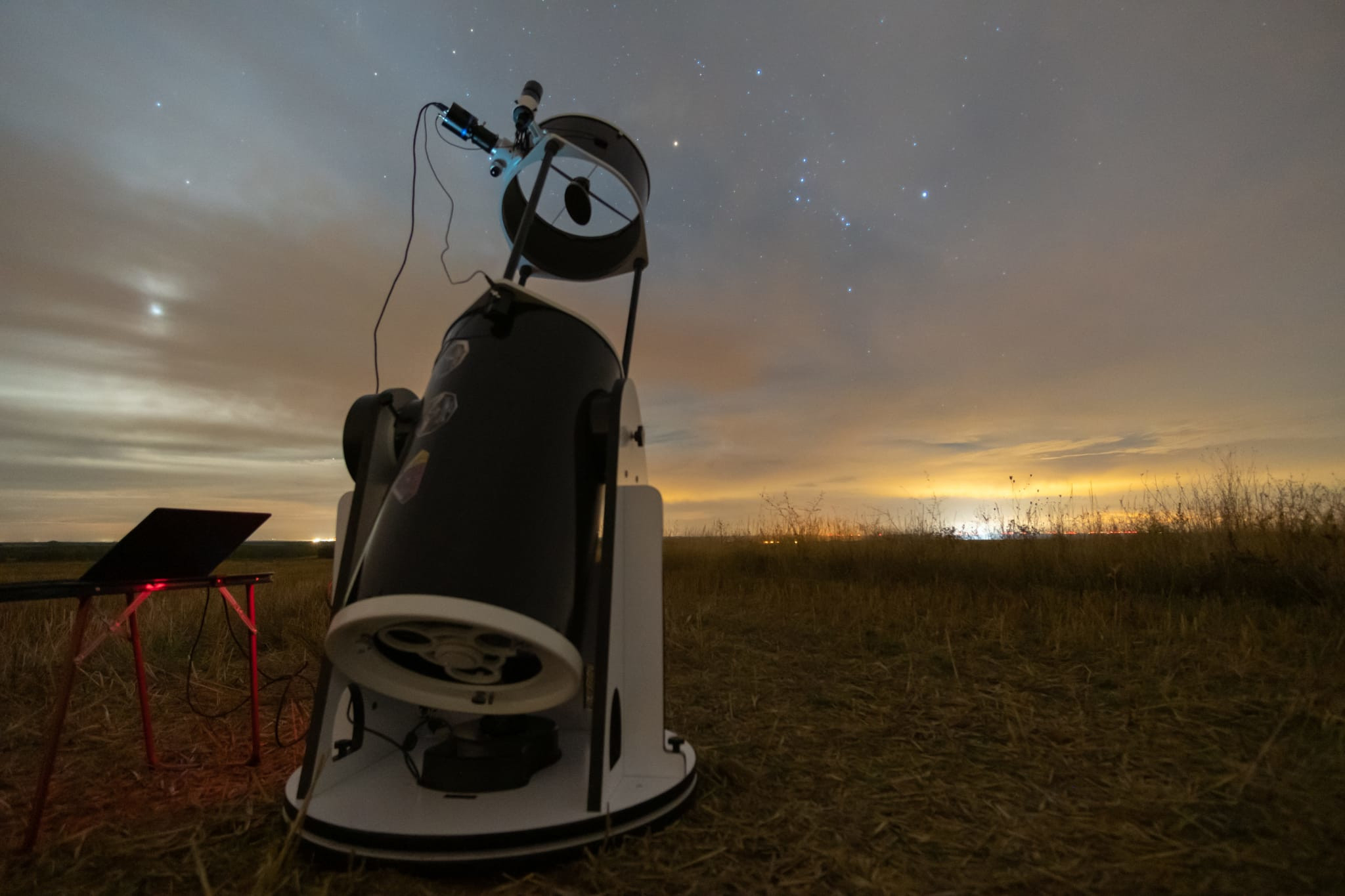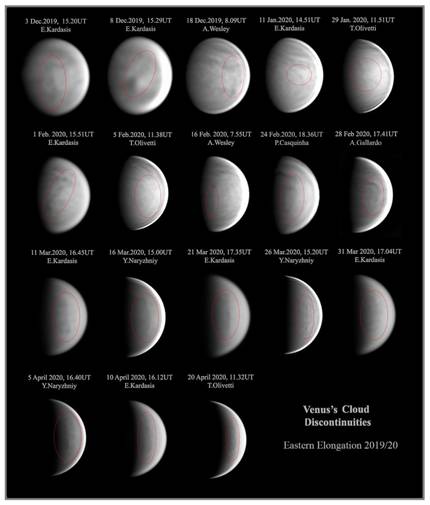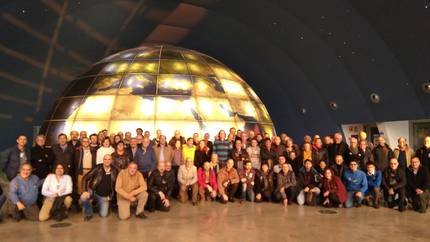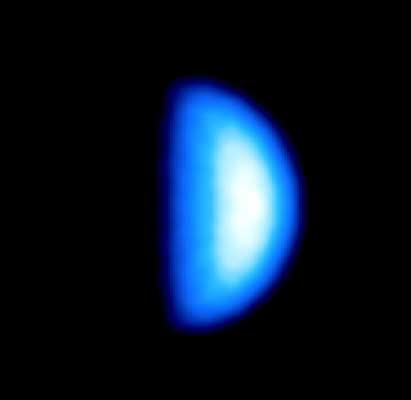Proam 2024 Astronomical Congress in San Sebastian
2024/03/01 Ordóñez Etxeberria, Iñaki - Iruñeko Planetarioa SEAko Proam Batzordea | Garate Lopez, Itziar - EHUko Zientzia Planetarioen Taldeko doktoregaia Iturria: Elhuyar aldizkaria
The technological advances of recent years and the great experience of astronomy enthusiasts and the tireless effort make the observation of amateurs increasingly used in scientific research. The aim of the Proam Astronomical Conferences is to make this collaboration between professionals and amateurs visible and encouraged. This year it will be held at the Miramar de Donostia Palace from 1 to 3 March.

Proam collaboration, that is, collaboration between professionals and amateurs (fans of great knowledge and experience) is fundamental in many fields of astronomy: observation of planets, monitoring and detection of asteroids, search for novas and supernovas from other galaxies, monitoring of solar activity, identification of double stars, variable star measurements, observation of exoplanets, investigation of light pollution…
The contributions of amateurs to astrophysical and astronomical studies have seen a notable increase in recent years. Amateur data and observations are increasingly used in scientific research conducted by different institutes, research centres and universities. What is more, in some cases, such as star concealments, observations and contributions from amateurs are absolutely necessary.
Example: Polymele
The passing of an asteroid in front of a star is called star concealment, and a couple of years ago we had the opportunity to observe such an event. At 4:23 hours from Madrid on October 1, 2021, the asteroid Polymele passed past a star of the constellation of Taurus. To follow up on the Polymel event, a network of telescopes was deployed in a long and narrow area of the northern Iberian peninsula, each telescope was controlled by a group of amateur astronomers.
To track the event, NASA requested the collaboration of this group a few months earlier and made 22 40-cm telescopes available to volunteers for 4 nights. The fans who participated in this campaign prepared with great precision and pampering the observation of Polymel's concealment. In addition to the team coordinated by NASA, other amateur astronomers joined the initiative. They were located outside the area and, in fact, made more successful observations.
For star-occulting observations, it is desirable that the network of telescopes be as wide as possible in order to accurately capture the "shadow" left by the asteroid in certain areas of the Earth. When the data collected by all telescopes is combined, it is possible to identify the shape of the asteroid and, in addition, its orbital parameters can be more precisely defined.
The Polymel observation campaign brought together over 100 people. Amateur astronomers became fully involved in such an important observation for NASA. In fact, the LUCY space mission, sent by the US Agency in 2021, will fly above the asteroid Polymele in 2027, and data from Earth are essential for a successful approach to LUCY. Today, with professional observatories it is not possible to control the whole field of concealment or all the shadow left on Earth. The participation of fans is therefore key to the success of such projects.
Proam Commission for SEA
Given the importance and evolution of the proam collaboration in astronomy, the Spanish Society of Astronomy (SEA) has had a specific committee on this matter since 2009. The Proam Committee aims to strengthen relations between professional and amateur astronomers and to encourage collaboration between them, with the support of the Spanish Federation of Astronomical Associations (FAAE).

However, until recently, many questions about proam collaboration were unanswered: how many fans actively participate in proam projects? How many professionals use the data collected from these collaborations? In what area of astronomy is the influence of amateur participation more relevant? What challenges should these partnerships face? Can the scientific contribution of Amateur be evaluated?
Thanks to the reports and evaluations that the Proam Commission of the SEA has carried out in recent years, we know that in Spain the amateur astronomy group is very broad. Some of them actively work on scientific projects from professional research groups, more than 100 long-time amateurs working with professionals. This collaboration has been reflected in numerous publications of national scientific production. The Proam Commission has found over 200 scientific articles that have been made possible by contributions from Amateur, as well as 4,800 astronomical circulars and many presentations at astronomical conferences.
Once the situation has been analysed, initiatives have been activated to optimize the dynamics of collaboration between amateurs and professionals. In this regard, the Proam Commission has created a single website in Spain proam.sea-astronomia.es, dedicated exclusively to proam cooperation. This portal, coordinated with the FAAE, provides information on conferences, sessions, awards, training and resources for both professionals and fans. It also aims to function as a meeting point between the two communities.
As outstanding activities we have the monthly dissemination sessions. The last Thursday of the month we present and highlight the proam collaborations, the results of amateur state astronomers and the projects that use them. These sessions allow the sharing of valid and unique experiences and their dissemination serves to foster new partnerships. The sessions are recorded and displayed on the FAAE YouTube channel.
Example: Planetary Sciences
In the first session, for example, we had the presence of Ricardo Bone, a member of the UPV Planetary Science Group, who showed us that in planetary sciences we can find cases of proam collaboration on almost every planet in the Solar System. With today's amateur techniques, besides the clouds of Jupiter and Saturn, you can see the clouds of Mars. Some amateurs have also come to observe the surface of Venus, although it is covered by a layer of clouds 30 km thick. In fact, using fast cameras, they override the atmospheric effects and take high-resolution images.
These images are very useful for professional researchers. For example, the Planetary Sciences Group of the UPV/EHU has used them on several occasions to measure the speed of the winds of Jupiter and Saturn. Also to measure the spread and frequency of an undulating structure that occasionally appears in the atmosphere of Venus.
Proam Astronomy Congresses
In this context, the SEA, in collaboration with an astronomical association, periodically organizes the Proam Astronomy Congresses to promote collaboration between amateur and professional astronomy projects. These conferences are an excellent opportunity to present the advances in proam cooperation projects, initiate new projects, meet the participants and share experiences. The first congress was held in Córdoba in 2009 and the last in Huesca in 2019.

In Euskal Herria this year we were born, as in Donostia there will be one of those congresses, the fourth proam.eus, so emblematic for the proam community. It will be from 1 to 3 March by the Society of Sciences Aranzadi. For the Proam Astronomy Congress of 2024, a comprehensive scientific program has been prepared that includes collaborations on topics to galaxies furthest from the Solar System, as well as other very important issues for the proam community such as the fight against light pollution.
Since the asteroid Polymele passed ahead of this star of the constellation of Taurus, many new projects have emerged and many astronomical observations have been possible. But the proam community has not had the opportunity to meet, share initiatives or present results. IV Donostia. The Proam Astronomy Congress will be a perfect meeting point for all of this.

Gai honi buruzko eduki gehiago
Elhuyarrek garatutako teknologia





